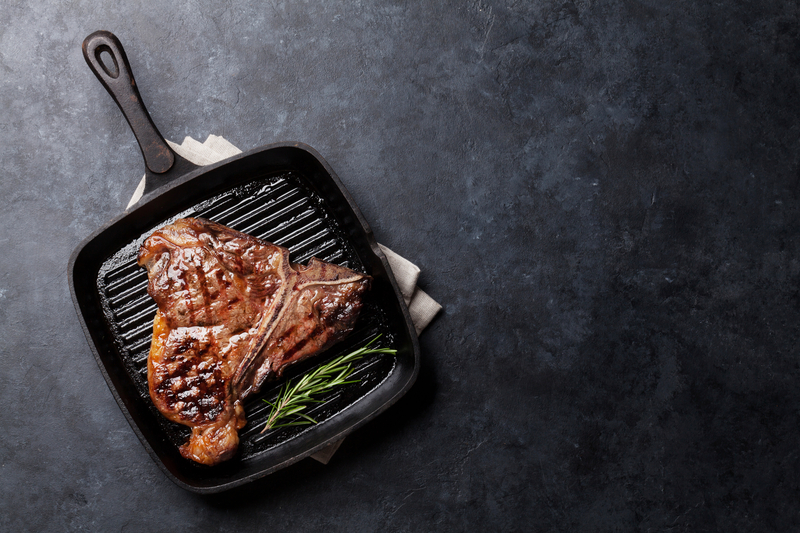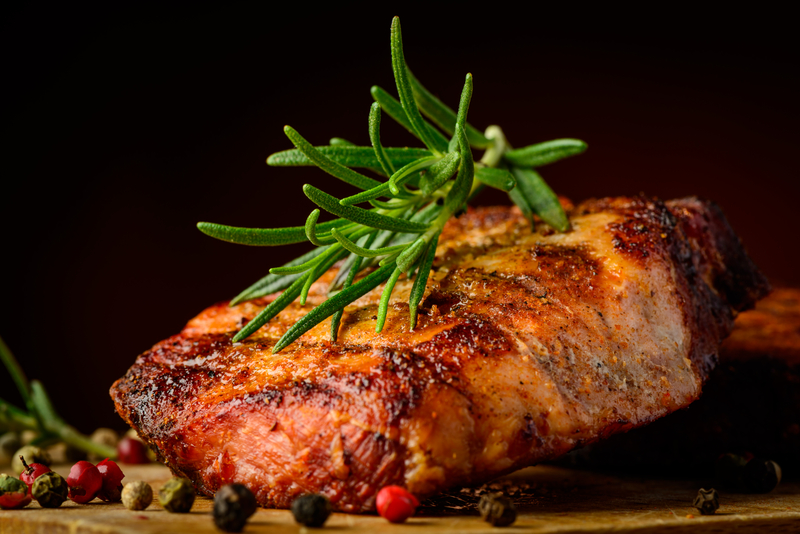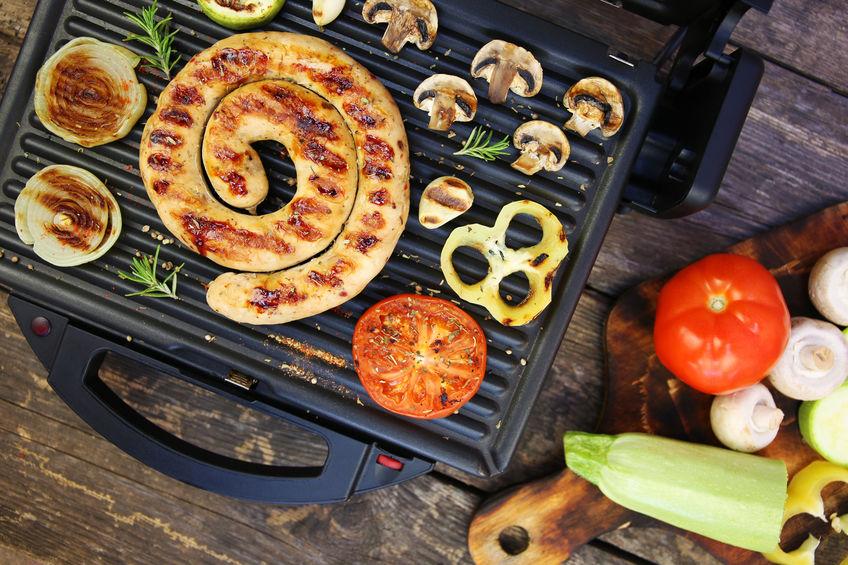
Grilling enthusiasts often wonder if they can bring their outdoor cooking experience indoors.
The allure of grilling year-round, regardless of weather, is tempting.
Portable gas grills are designed for outdoor use only and should never be used inside homes, garages, or other enclosed spaces due to serious safety risks.
Using a gas grill indoors poses significant dangers.
These devices produce carbon monoxide, an odorless and potentially lethal gas.
Without proper ventilation, carbon monoxide can quickly build up to dangerous levels.
Indoor spaces lack the airflow needed to disperse fumes and heat generated by gas grills.
Safety should always be the top priority when it comes to grilling.
For those craving grilled flavors indoors, safer alternatives exist.
Electric grills, stovetop grill pans, and broilers can provide similar results without the hazards associated with gas grills.
These options allow for indoor grilling while maintaining a safe cooking environment.
Understanding the Risks of Indoor Grilling

Indoor grilling with portable gas grills poses significant health and safety hazards.
Proper awareness of these risks is crucial for anyone considering using such equipment inside.
Carbon Monoxide Hazards
Carbon monoxide (CO) is a serious threat when grilling indoors.
This odorless, colorless gas is produced by burning propane or natural gas.
It can quickly build up to dangerous levels in enclosed spaces.
Exposure to CO can lead to symptoms like headaches, dizziness, and nausea.
In severe cases, it can cause unconsciousness or death.
CO poisoning is particularly dangerous because it’s hard to detect without proper alarms.
Portable gas grills are designed for outdoor use where CO can dissipate.
Indoor use creates a high risk of CO accumulation, even with some ventilation.
Fire Hazards and Safety Measures
Fire risk increases significantly when using a gas grill indoors.
Flammable materials near the grill can easily ignite.
Key safety measures include:
- Keeping a fire extinguisher nearby
- Maintaining a safe distance from walls and furniture
- Avoiding loose clothing while grilling
- Never leaving the grill unattended
Grease fires are a common hazard.
They can quickly spread and are challenging to extinguish.
Regular cleaning of the grill reduces this risk.
Ventilation Concerns and Requirements
Proper ventilation is critical for indoor grilling but often inadequate in residential settings.
Professional kitchens use specialized ventilation systems designed for indoor cooking.
Natural ventilation through open windows is insufficient for gas grills.
The high heat and smoke production require powerful exhaust systems.
Lack of proper ventilation can lead to:
- Buildup of harmful gases
- Smoke accumulation
- Increased fire risk
- Poor air quality
Gas Leaks and Air Quality
Gas leaks from portable grills pose a serious safety risk indoors.
Small leaks can go unnoticed, creating an explosive environment.
Indoor air quality suffers when grilling inside.
Smoke and grease particles contaminate the air, leading to respiratory issues.
These pollutants can linger long after cooking is finished.
Regular maintenance and inspection of gas connections are essential.
Even small leaks can have significant consequences in enclosed spaces.
Air purifiers are not effective against the heavy pollutants produced by grilling.
The best solution is to use gas grills exclusively outdoors as intended.
Alternatives to Using Gas Grills Indoors

Several safe and effective options exist for indoor grilling without the risks associated with portable gas grills.
These alternatives provide similar cooking results while prioritizing safety in enclosed spaces.
Electric Grilling Options
Electric grills offer a convenient indoor grilling solution.
These appliances come in various sizes and styles, from countertop models to larger freestanding units.
They use electricity to heat cooking surfaces, eliminating the need for combustible fuels.
Many electric grills feature non-stick surfaces and adjustable temperature controls.
This allows for precise cooking of different foods.
Some models include removable plates for easy cleaning.
Indoor electric grills often have smokeless designs, making them suitable for apartment living.
They can reach high temperatures for searing meats while remaining safe for indoor use.
Stovetop and Indoor Grill Pans
Stovetop grilling provides another safe indoor option.
Grill pans are specially designed cookware that can be used on standard kitchen ranges.
These pans typically have raised ridges to create grill marks on food.
 Cast iron grill pans are popular for their heat retention and durability.
Cast iron grill pans are popular for their heat retention and durability.
They can achieve high temperatures for searing meats and vegetables.
 Non-stick versions are also available for easier food release and cleanup.
Non-stick versions are also available for easier food release and cleanup.
Some stovetop grills span two burners, offering a larger cooking surface.
These often include a grease collection system to minimize smoke and splatters during cooking.
Infrared and Other Indoor Cooking Technologies
nfrared technology is transforming indoor grilling by delivering quick, even cooking with infrared heat.
 The Tenergy Redigrill Smoke-Less Infrared Grill, exemplifies this innovation, offering rapid preheating and consistent high temperatures perfect for searing meats.
The Tenergy Redigrill Smoke-Less Infrared Grill, exemplifies this innovation, offering rapid preheating and consistent high temperatures perfect for searing meats.
These grills generate less smoke than traditional methods, making them ideal for well-ventilated indoor spaces.
Some models even combine infrared with additional features for enhanced versatility.
Other indoor cooking options include contact grills and multi-functional appliances.
These devices can grill, sear, and perform tasks like baking or roasting, providing a flexible and convenient cooking experience while ensuring compliance with indoor safety standards.
Precautionary Measures for Indoor Grilling

Indoor grilling requires careful attention to safety.
Proper ventilation, carbon monoxide detection, grill placement, and maintenance are crucial for minimizing risks.
Ensuring Adequate Ventilation
Adequate ventilation is essential for indoor grilling.
Open windows and doors to create airflow.
Use exhaust fans or range hoods to remove smoke and fumes.
Install a high-powered ventilation system designed for indoor grilling.
Consider portable air purifiers with activated carbon filters.
These can help remove odors and particles from the air.
Place fans strategically to direct smoke towards open windows or ventilation systems.
Never grill in enclosed spaces without proper air circulation.
Basements and garages pose higher risks due to limited ventilation.
Always prioritize air quality and safety over convenience when choosing an indoor grilling location.
Using Carbon Monoxide Detectors
Carbon monoxide (CO) is a silent, odorless threat when grilling indoors.
Install CO detectors on every level of your home, especially near sleeping areas.
Place detectors at least 15 feet away from fuel-burning appliances to avoid false alarms.
Test CO detectors monthly and replace batteries annually.
Choose detectors with digital displays to monitor CO levels continuously.
Some models connect to smart home systems for remote monitoring.
Learn to recognize symptoms of CO poisoning: headaches, dizziness, nausea, and confusion.
If the alarm sounds or symptoms occur, immediately turn off the grill and evacuate.
Seek fresh air and call emergency services if needed.
Safe Placement and Handling of Grills
Position indoor grills away from flammable materials like curtains, paper, or wooden furniture.
Keep a minimum 3-foot clearance around the grill.
Place the grill on a stable, non-combustible surface to prevent tipping.
Never leave a lit grill unattended.
Keep children and pets away from the grilling area.
Use long-handled utensils and heat-resistant gloves to avoid burns.
Avoid moving hot grills.
Let the grill cool completely before cleaning or relocating.
Keep a fire extinguisher nearby and know how to use it.
Regular Cleaning and Maintenance
Clean your indoor grill after each use to prevent grease buildup.
Remove and wash grates, drip pans, and heat shields.
Use a grill brush to scrub away food residue.
Deep clean your grill every few months.
Disassemble and soak parts in warm, soapy water.
Scrub with a non-abrasive pad and rinse thoroughly.
Dry all components before reassembling.
Maintain proper airflow by clearing vents and burners of debris.
Recognizing Safe Indoor Grilling Practices

Indoor grilling requires careful consideration of equipment, temperature, and ventilation to ensure safety.
Proper precautions can minimize risks associated with indoor cooking methods.
Choosing the Right Type of Grill
Electric grills are the safest option for indoor use.
They produce no open flames or harmful fumes.
Smokeless electric grills feature non-stick cooking surfaces and drip trays to reduce smoke.
Avoid using propane or charcoal grills indoors.
These release dangerous carbon monoxide and are fire hazards.
Some manufacturers offer specially designed indoor gas grills, but these require proper ventilation and careful operation.
Indoor grilling appliances like panini presses or contact grills provide safer alternatives.
These enclosed units contain heat and grease splatter effectively.
Temperature Control and Monitoring
Precise temperature control is crucial for safe indoor grilling.
Use a reliable meat thermometer to ensure food reaches safe internal temperatures.
For poultry, aim for 165°F (74°C), while beef and pork should reach at least 145°F (63°C).
Monitor the grill’s temperature closely to prevent overheating.
Many electric grills have built-in temperature controls.
Adjust heat settings as needed to maintain consistent cooking temperatures.
Keep a close eye on food while grilling indoors.
Flare-ups can occur quickly, especially with fatty foods.
Have a fire extinguisher nearby as a precaution.
Avoiding Toxic Fumes and Chemicals
Proper ventilation is essential when grilling indoors.
Use your kitchen’s exhaust fan or open windows to remove smoke and odors.
Avoid grilling in small, enclosed spaces without adequate air circulation.
Clean your indoor grill regularly to prevent buildup of grease and food particles.
These can produce smoke and unpleasant odors when heated.
Use mild, food-safe cleaning products to avoid introducing harmful chemicals to cooking surfaces.
Choose lean cuts of meat to reduce smoke and grease.
Marinate foods with low-sugar, low-oil mixtures to minimize flare-ups and smoke production during cooking.
Looking for a Reliable Easy to Use Indoor Grill?

 The George Foreman Indoor/Outdoor Electric Patio Grill is a versatile and spacious cooking solution, perfect for any setting, from apartments to patios.
The George Foreman Indoor/Outdoor Electric Patio Grill is a versatile and spacious cooking solution, perfect for any setting, from apartments to patios.
Its sleek black design is complemented by a removable stand, allowing for seamless transitions between countertop and outdoor use.
With a generous capacity to prepare up to 15 servings at once, it’s ideal for entertaining or large family meals.
This grill is apartment-approved, emitting no smoke and ensuring compliance with housing regulations.
The non-stick surface simplifies cooking and cleaning, while the temperature control system offers precision for grilling a variety of foods.
Why It’s a Great Choice?
 What sets this grill apart as the best indoor grill is its remarkable adaptability and user-friendly design.
What sets this grill apart as the best indoor grill is its remarkable adaptability and user-friendly design.
Its apartment-friendly approval ensures you can enjoy grilling without outdoor space, while the stand offers flexibility for outdoor gatherings when desired.
The large cooking surface accommodates meals for a crowd, yet its compact, efficient design works perfectly indoors.
The non-stick surface reduces mess and promotes healthier cooking by eliminating the need for excess oils.
Combined with George Foreman’s trusted brand reputation, this grill is a standout choice for both novice cooks and grilling enthusiasts.

